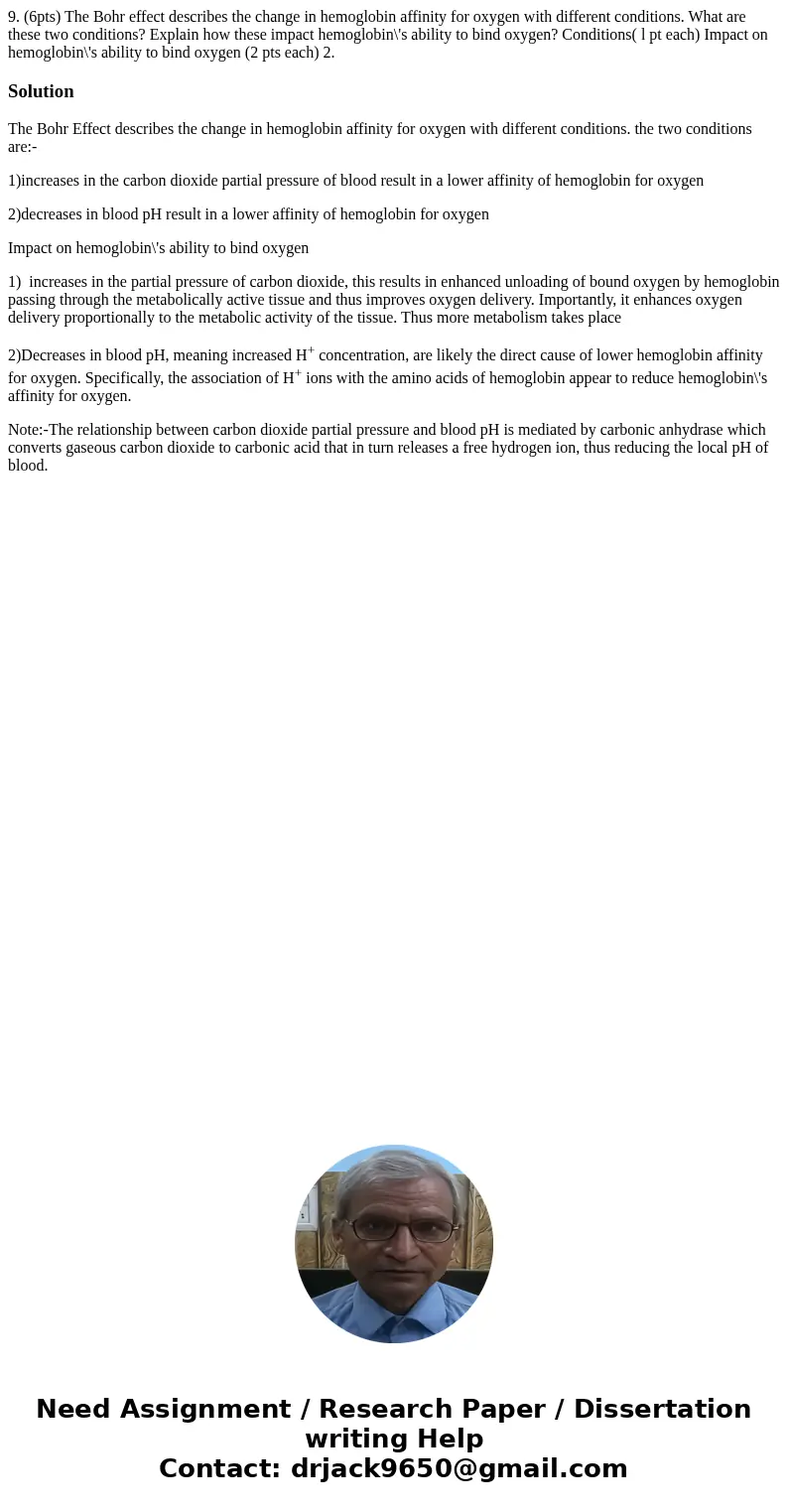9 6pts The Bohr effect describes the change in hemoglobin af
Solution
The Bohr Effect describes the change in hemoglobin affinity for oxygen with different conditions. the two conditions are:-
1)increases in the carbon dioxide partial pressure of blood result in a lower affinity of hemoglobin for oxygen
2)decreases in blood pH result in a lower affinity of hemoglobin for oxygen
Impact on hemoglobin\'s ability to bind oxygen
1) increases in the partial pressure of carbon dioxide, this results in enhanced unloading of bound oxygen by hemoglobin passing through the metabolically active tissue and thus improves oxygen delivery. Importantly, it enhances oxygen delivery proportionally to the metabolic activity of the tissue. Thus more metabolism takes place
2)Decreases in blood pH, meaning increased H+ concentration, are likely the direct cause of lower hemoglobin affinity for oxygen. Specifically, the association of H+ ions with the amino acids of hemoglobin appear to reduce hemoglobin\'s affinity for oxygen.
Note:-The relationship between carbon dioxide partial pressure and blood pH is mediated by carbonic anhydrase which converts gaseous carbon dioxide to carbonic acid that in turn releases a free hydrogen ion, thus reducing the local pH of blood.

 Homework Sourse
Homework Sourse